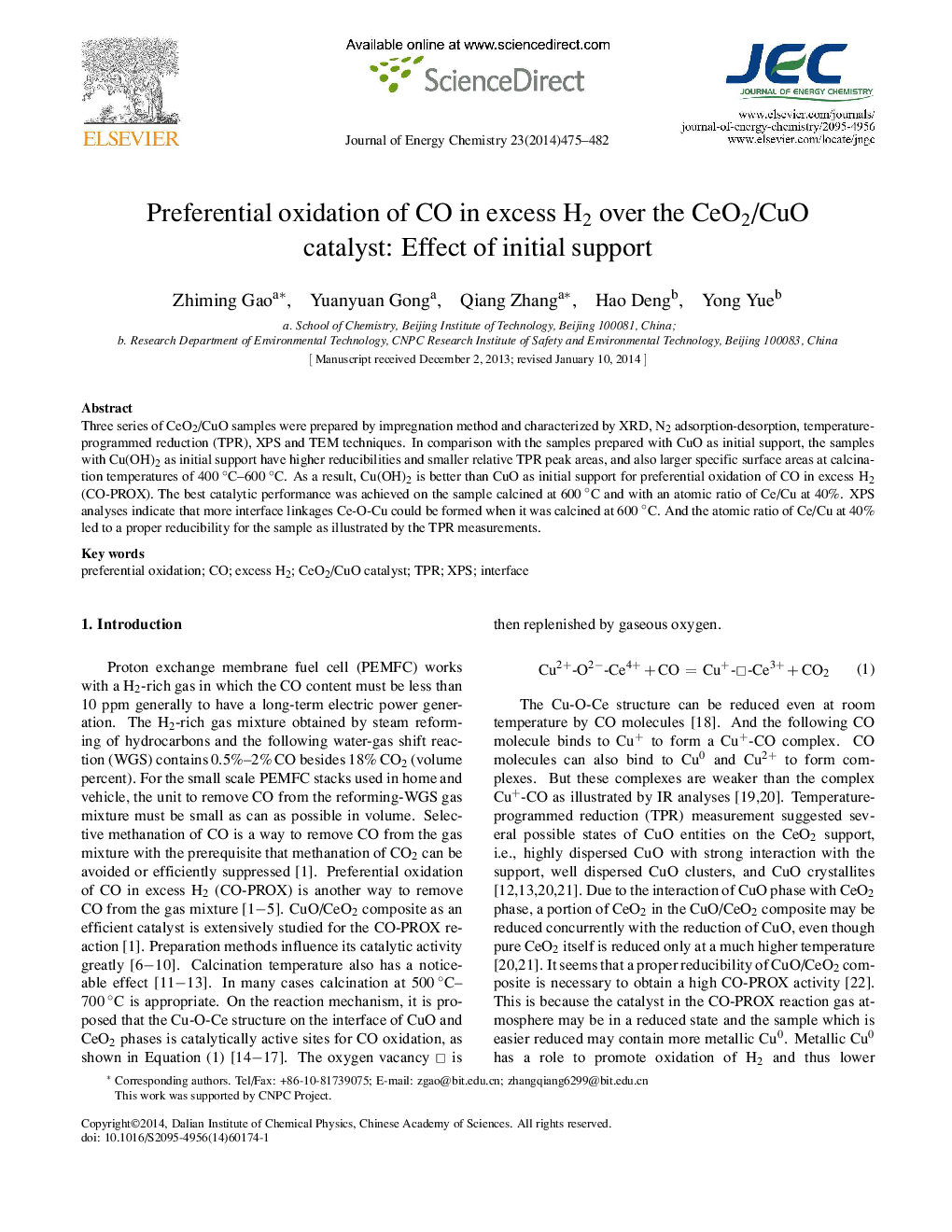| Article ID | Journal | Published Year | Pages | File Type |
|---|---|---|---|---|
| 63980 | Journal of Energy Chemistry | 2014 | 8 Pages |
Three series of CeO2/CuO samples were prepared by impregnation method and characterized by XRD, N2 adsorption-desorption, temperature-programmed reduction (TPR), XPS and TEM techniques. In comparison with the samples prepared with CuO as initial support, the samples with Cu(OH)2 as initial support have higher reducibilities and smaller relative TPR peak areas, and also larger specific surface areas at calcination temperatures of 400 °C–600 °C. As a result, Cu(OH)2 is better than CuO as initial support for preferential oxidation of CO in excess H2 (CO-PROX). The best catalytic performance was achieved on the sample calcined at 600 °C and with an atomic ratio of Ce/Cu at 40%. XPS analyses indicate that more interface linkages Ce-O-Cu could be formed when it was calcined at 600 °C. And the atomic ratio of Ce/Cu at 40% led to a proper reducibility for the sample as illustrated by the TPR measurements.
The samples with Cu(OH)2 as initial support exhibited higher catalytic activities for CO-PROX due to their higher reducibilities and more interface linkages.Figure optionsDownload full-size imageDownload as PowerPoint slide
